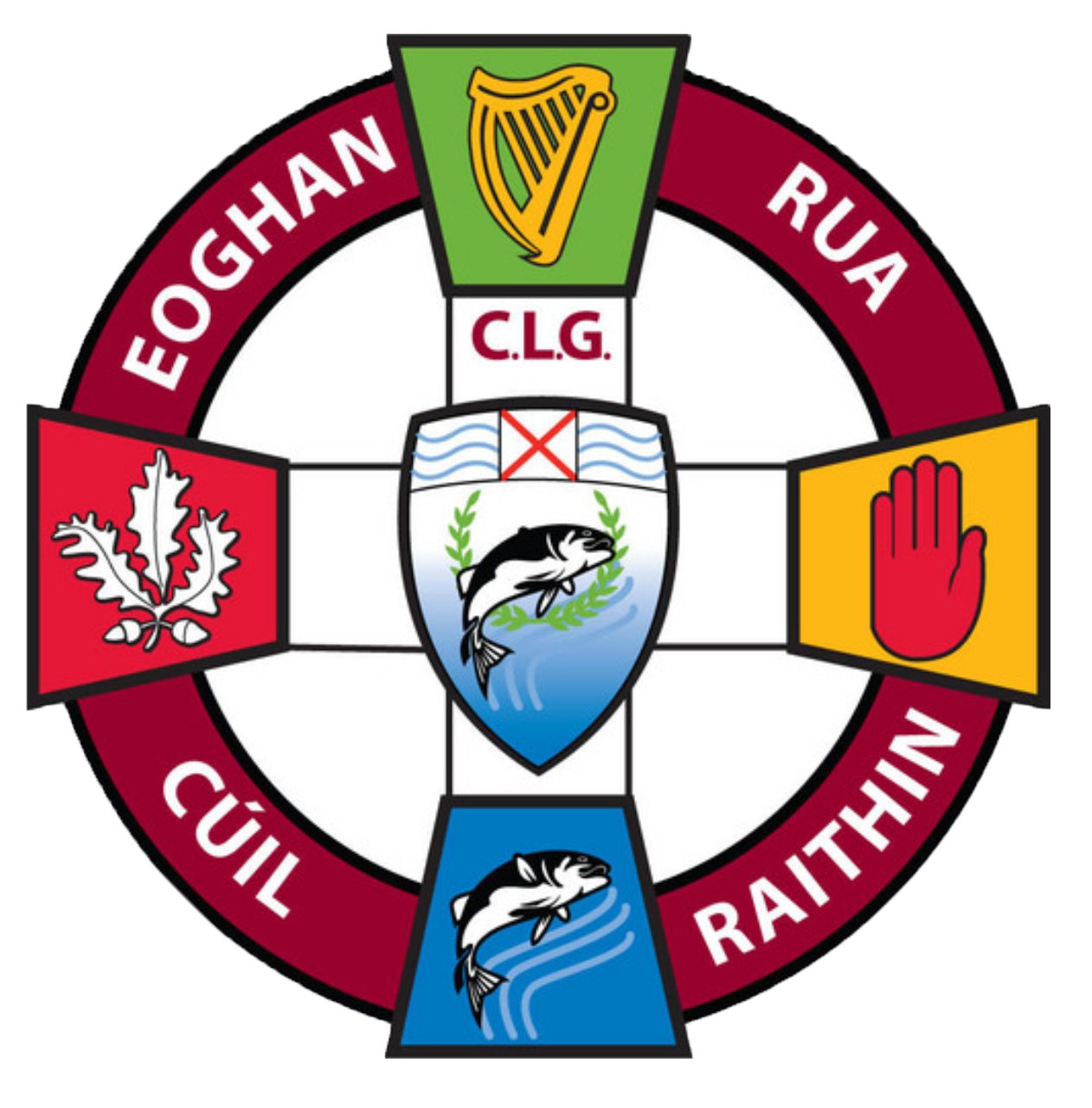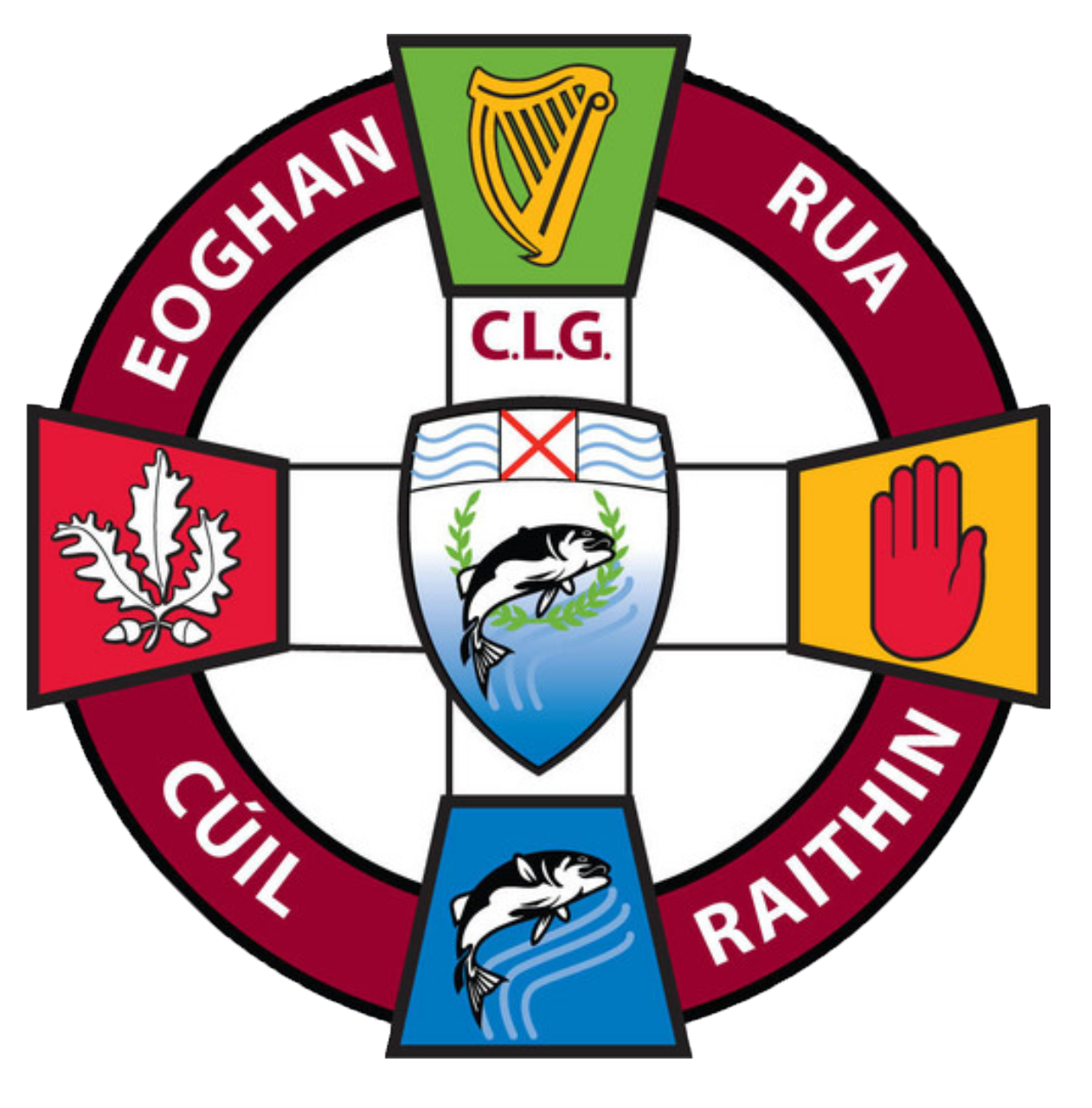EOGHAN RUA CLG
CÚIL RATHÁIN
PLAY WITH PRIDE. WIN WITH GRACE. LOSE WITH DIGNITY.
SAFEGUARDING CHILDREN
AND YOUNG PEOPLE
www.eoghanrua.com
2015
IMPORTANT
PLEASE READ CAREFULLY
Eoghan Rua CLG Cúil Ratháin
Safeguarding Children and Young People
Introduction
Adults make a great contribution to the development of sport for young people. As citizens, adults also have a responsibility to protect children from harm and to abide by guidelines (both government and/or Governing Bodies) in responding to and reporting child protection concerns. This responsibility exists whenever concerns might arise, whether inside or outside sport.
Background
Children have much to gain from sport. Their sense of fun and spontaneity are enhanced. Sport provides the opportunity for children to learn new skills, grow in confidence and maximise their potential. A child-centred approach that is positive and progressive will contribute greatly to health and well-being.
To achieve this adults need to interact with children in sport with trust and influence. The trust implicit in adult-child relationships in sport places a duty of care on all adults to safeguard the health, safety and welfare of children. They should also ensure that children are treated with integrity and respect and that the self-esteem of children is enhanced.
Implementation
Eoghan Rua CLG Cúil Ratháin will work to ensure that best practice is followed in the area of Child Protection within the club.
Specifically the club will work to ensure the following:
- adapt and implement the “Code of Ethics and Good Practice for Children’s Sport in Ireland” and “CLG Guidelines for Dealing with Allegations of Abuse”.
- have in place a constitution that is approved and adapted by club members at an AGM.
- ensure that the club’s Management Committee is elected by club members at each AGM.
- ensure a regular turnover of committee members yet maintaining experience and continuity.
- ensure that all members are given adequate notice of the AGM and other meetings.
- ensure that minutes of all meetings are recorded, filed and distributed to relevant parties/personnel.
- adopt and apply a safe and clearly defined method of recruiting and selecting coaches/leaders.
- clearly define the role and responsibilities of committee members, coachers, leaders, parents/guardians.
- ensure that there is a Code of Conduct within the club and that it is widely known.
- ensure that there is a disciplinary, complaints and appeals procedure within the club and that it is widely known.
- have in place procedures for dealing with a concern or complaint made against a member, coach/leader both within the club and to a Statutory Authority.
- the Club Chairperson or other designated committee member or the Children’s Officer will be appointed to liaison with the Statutory Authority in relation to any allegations or suspicions of child abuse.
- the club will appoint two Child Officers through whom concerns may be expressed. These Child Officers are Brian Lenehan and Schira McGoldrick.
- develop effective procedures for responding to and recording accidents/injuries.
- ensure that coaches/leaders report to the Club Management Committee on a regular basis.
- share information about child protection with parents, members, officials.
- operate in a climate of openness and transparency.
Reporting
As stated earlier, the trust implicit in adult-child relationships in sport places a duty of care on all adults to safeguard the health, safety and welfare of children.
Where there is a concern regarding a child protection issue the following reporting procedure should be follow:
- Report to Brian Lenehan or Schira McGoldrick (Child Protection Officers) or any other club member
- Chair / Vice Chair informed
- Discipline Committee informed
- PSNI / Social Services informed
- County Designated Person
Procedures
The purpose of adhering to policies and procedures is to facilitate and encourage best practice. The club will follow the guidance given in respect of procedures detailed in “Code of Ethics and Good Practice for Children’s Sport” and “Guidelines for Dealing with Allegations of Abuse (CLG)” and any other recent, relevant document(s).
Training
The information, guidance and procedures contained within this policy will be reviewed annually and made available to committee members, coaches, parents, relevant others and on request. It is published on the club website, www.eoghanrua.com
Child Protection Training will take place on an on-going basis for those involved with under-age children.
Appendices
Appendix 1 – Club’s Code of Conduct
Appendix 2 – Advice to Coaches/leaders
Appendix 3 – Transport
Appendix 4 – Types of Abuse
Appendix 5 – Discipline and Appeals Committees
Appendix 1
Safeguarding Children and Young People
Club policy on conduct and discipline at senior and youth levels
Policy aim
The central aim of these policy guidelines is to ensure the maximum enjoyment of our games for all players, mentors, officials and supporters.
Policy guidelines
It is the clear policy of this Club
1 to encourage loyalty to the club and the Association
2 to encourage all players, mentors, officials and supporters to behave in a disciplined manner at all times.
3 to encourage players and mentors to show respect for each other, the opposition and their officials and the referee.
4 to encourage the elimination of improper or provocative language at all levels both on and off the field of play.
5 to encourage high standards of sportsmanship on the field of play.
6 to encourage everyone to show respect for their own property, that of their team-mates and that of our competitors.
7 to encourage a positive attitude to health education through avoidance of drugs, alcohol and the discouragement of smoking.
8 to positively encourage overall good conduct at all times by our players, mentors, officials and supporters.
9 that all members of the club act as good role models at all times.
This Code of Conduct will be displayed prominently in the Club House, as will the Safeguarding Children and Young People Policy.
Appendix 2
Safeguarding Children and Young People
Advice to Coaches/Leaders
Adults in children’s sport ought to be aware of protecting themselves against misunderstanding, misinterpretation or allegation.
To assist in this respect coaches/leaders may wish to consider the following points (these are not exhaustive)
- avoid spending excessive amounts of time with children on your own
- avoid taking children to coach’s/leader’s home
- avoid taking a child alone in a car
- avoid any form of force or corporal punishment.
- avoid accepting a confidence from a child
- avoid any kind of inappropriate gesture
- avoid any kind of inappropriate language or comment
- have another adult present if treated a child for an injury
- be aware that touching a child could be open to misunderstanding/misinterpretation
- contact children via parents, avoiding direct texting.
Appendix 3
Safeguarding Young People and Children
Transport
The club in indebted to all those who give voluntarily of their time in transporting children on behalf of the club.
Coaches/Drivers must ensure that
- the vehicle is taxed and insured
- the vehicle is currently roadworthy (MOT valid)
- seatbelts are used
- there is a point(s) of contact/communication
- parents are informed of details of travel arrangements, including departure and pick-up times.
Appendix 4
Safeguarding Children and Young People
Types of Abuse
Children may be subjected to abuse from a wide variety of people who have responsibility for their care. Children are most commonly abused by individuals well known to them.
Sports coaches/leaders should be familiar with signs and behaviour that may indicate abuse. Abuse is usually classified into four different types.
1 Neglect
This is where a child suffers significant harm or impairment of development by being deprived of food, clothes, hygiene, health care, safety etc.
2 Physical abuse
This is any form of non-accidental injury, hurt or physical harm done to a child eg shaking, hitting, kicking, confinement etc.
3 Sexual abuse
This is where a child is used by another for his/her gratification or for that of others eg touching, molesting, exposure etc.
4 Emotional abuse
This is where a child’s needs for love, affection, approval, security etc are not met. It is normally found in the relationship between an adult and a child over a period of time rather than in a specific event.
Appendix 5
Safeguarding Children and Young People
Photographs Publicity
Taking photographs of players, videoing of events, using our website to publicise activities are routine within most clubs. Certain safeguards will minimise risks as follows:
- obtain permission from parents/guardians in advance (permission may be sought at registration)
- ensure children are appropriately dressed
- avoid naming individuals in photographs/images; avoid personal details
- an image should be used for the sole purpose for which it was taken and not circulated more widely.
Appendix 6
Safeguarding Children and Young People
Reporting Procedure
The Club will carry out its duties and responsibilities in accordance with the practice and procedures recommended in the
1 Code of Ethics and Good Practice for Childrens’ Sport
2 GAA Guidelines for dealing with Allegations of Abuse (4th Ed 2009)
3 GAA Code of Best Practice in Youth Sport (2009)
4 GAA Code of Behaviour
These are available on the GAA website: www.gaa.ie
The Designated and Deputy Designated personnel are Brian Lenehan and Schira McGoldrrick
Non availability of Designated Person on in case of emergency
In an emergency, or in the event of a Club or CountyDesignated persons (or Deputy Designated Person) being unavailable to assist, reports and/or allegations of abuse may be made directly to the PSNI or Social Services by a member of the GAA or by any member of the public.
Reporting Allegations of child abuse in the GAA
Declaration
I have read the document and understand my responsibilities regarding child protection issues.
Name: _________________________________________
Signed: _________________________________________

